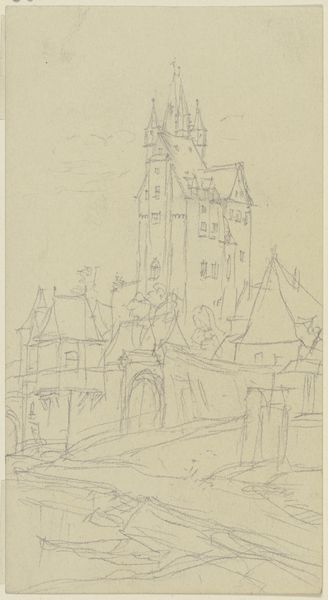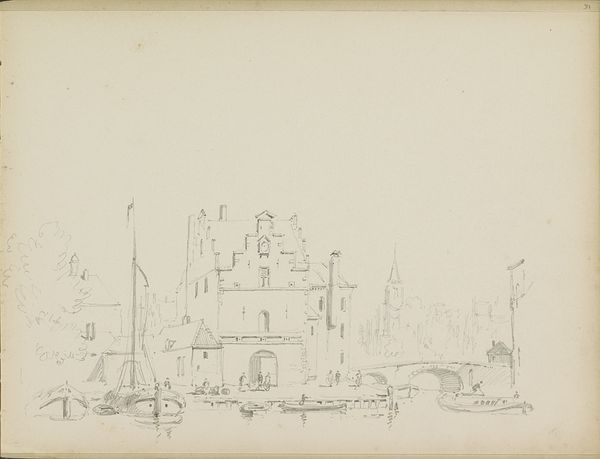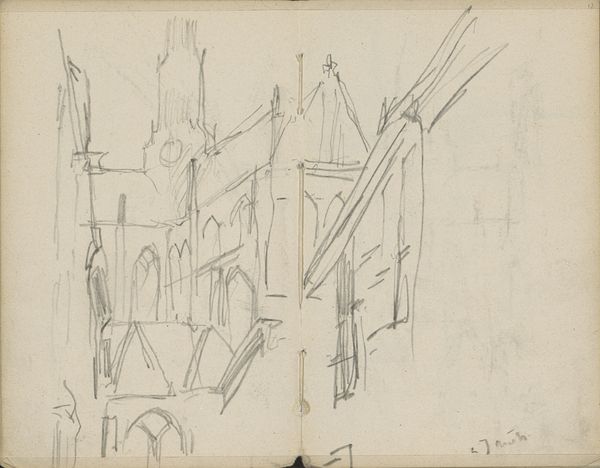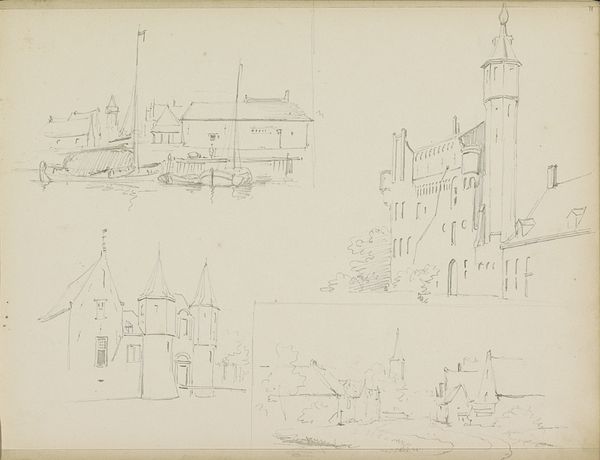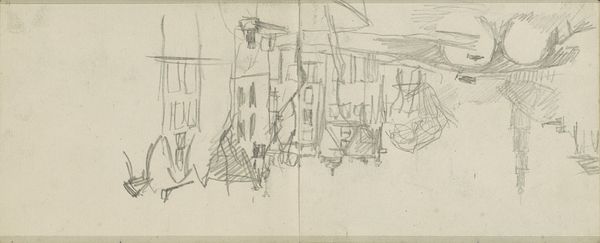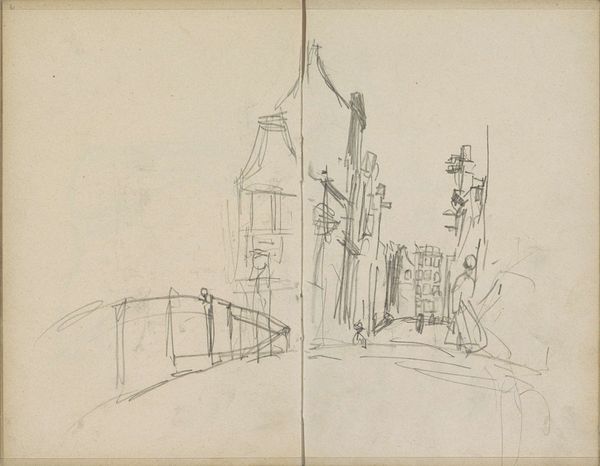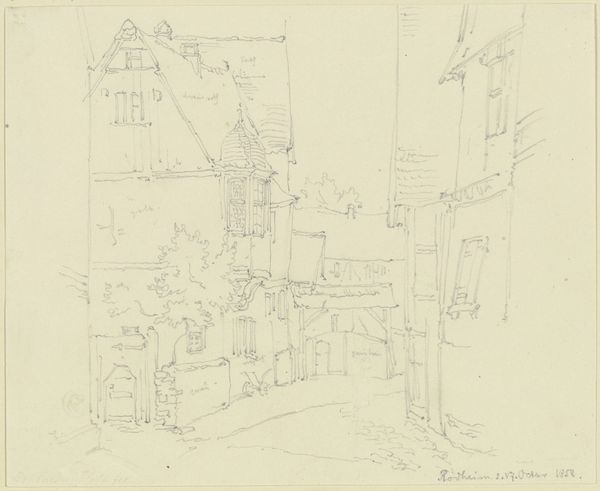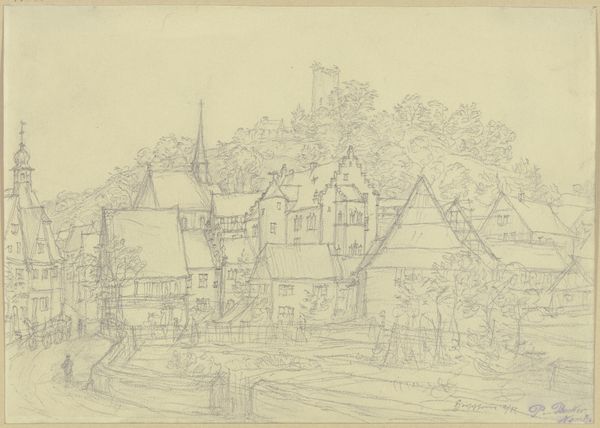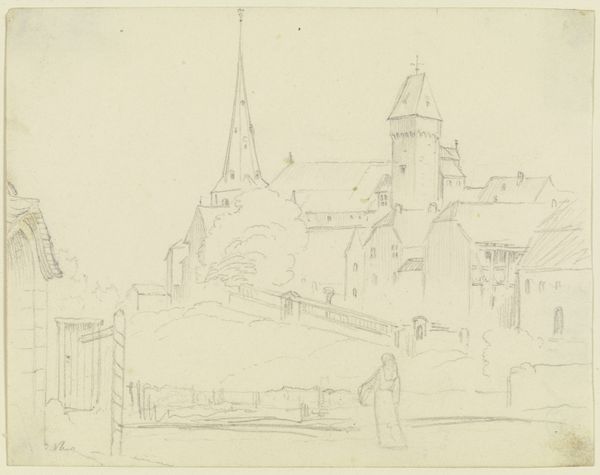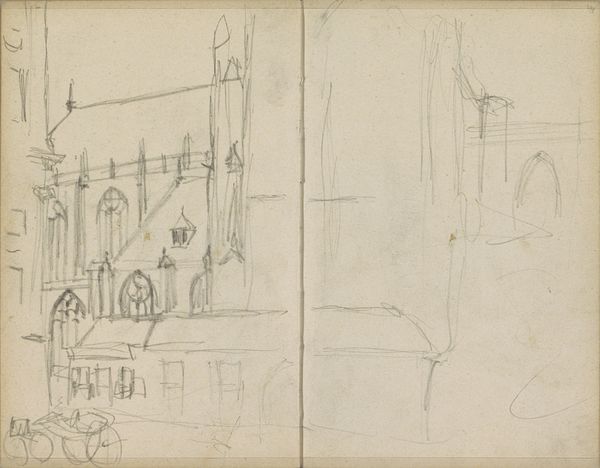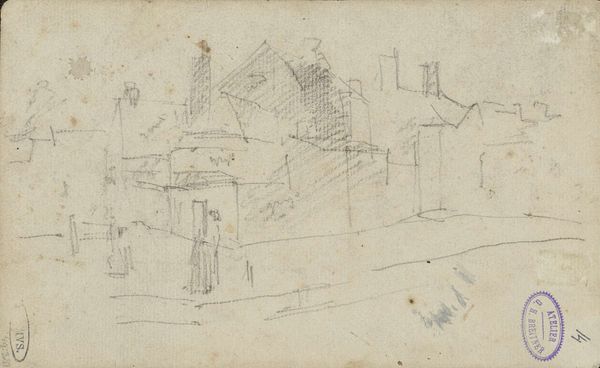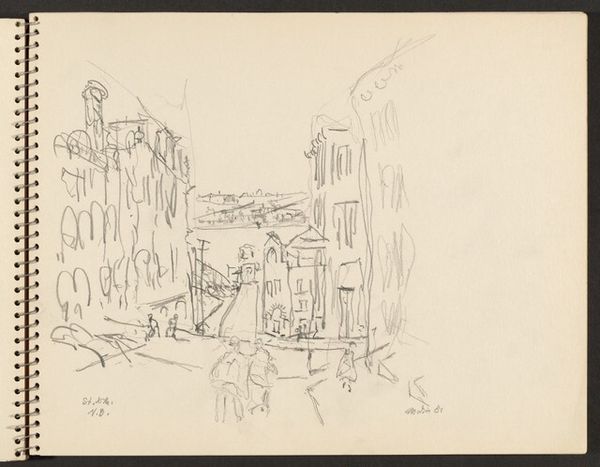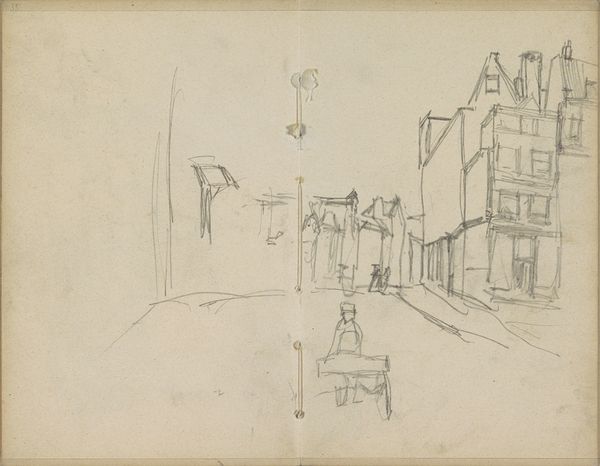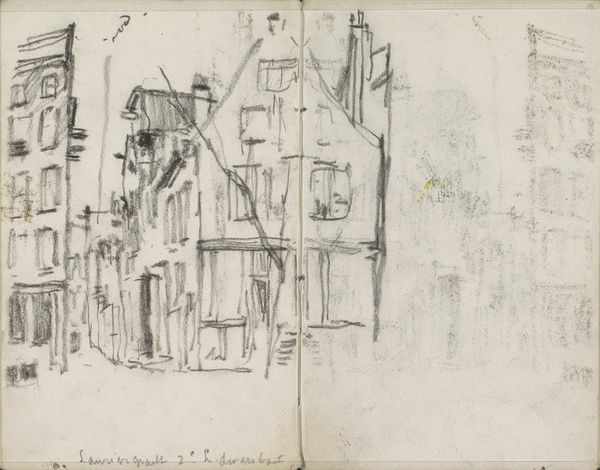
drawing, paper, architecture
#
drawing
#
16_19th-century
#
quirky sketch
#
pen sketch
#
paper
#
personal sketchbook
#
german
#
sketchwork
#
ink drawing experimentation
#
sketch
#
pen-ink sketch
#
sketchbook drawing
#
storyboard and sketchbook work
#
sketchbook art
#
architecture
#
initial sketch
Copyright: Public Domain
Editor: This is “Runkel on the Lahn,” a drawing by Peter Becker from the 19th century, done with pen on paper, here at the Städel Museum. It feels like looking into the artist’s personal sketchbook—a glimpse of a place through their eyes. What does this sketch evoke for you? Curator: This piece really speaks to the way the 19th-century artist engaged with the landscape as a cultural and historical artifact. Sketchbooks served as a visual diary, capturing not just the appearance of a place, but its essence. Think about the rise of tourism at this time and how artists played a role in shaping the perception of places like Runkel. What do you notice about how Becker chooses to represent the architecture here? Editor: I see the way the lines capture the structures, and how they feel superimposed upon the natural world. Was he aiming for documentation or something else entirely? Curator: That tension between nature and architecture is key. He wasn’t just documenting; he was participating in a larger artistic project of defining Germanness, specifically. The rugged landscape and imposing architecture, seen through an artistic lens, helped construct a national identity, a romantic view of the past. Where do you see this idealized past being conveyed in his artistic choices? Editor: Definitely in the architectural details—the emphasis on the buildings' solidity, hinting at permanence and history. It makes me think about who was able to access art and culture during this time, who was given permission to create it, and how this accessibility contributed to the historical narratives of the region and people it showcases. Curator: Precisely! The seemingly simple act of sketching becomes a statement about cultural values and historical narratives. It underlines art's public role in shaping our understanding of identity and place. Considering the sociopolitical currents present within German principalities during this time, we have to question whose image is broadcasted and for what purpose. Editor: I hadn’t thought about how a sketch could carry such weight! Curator: These images provided not only snapshots but building blocks in collective identity. Editor: That’s a powerful point to consider. Thanks for expanding my understanding!
Comments
No comments
Be the first to comment and join the conversation on the ultimate creative platform.
